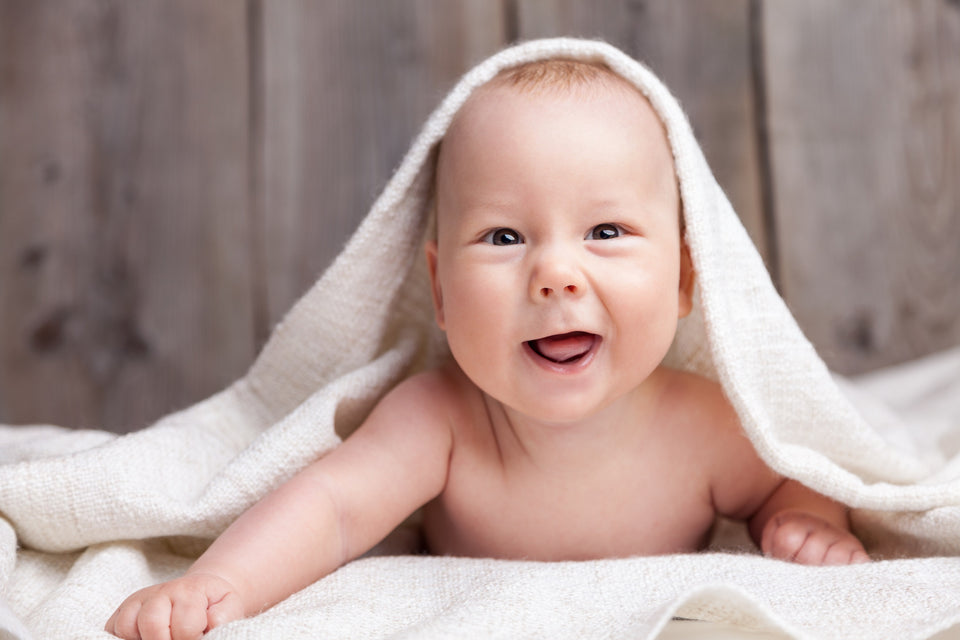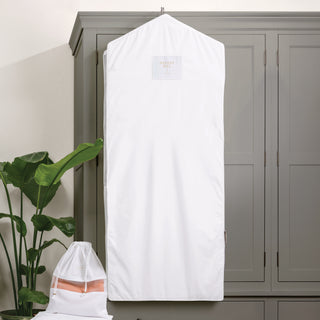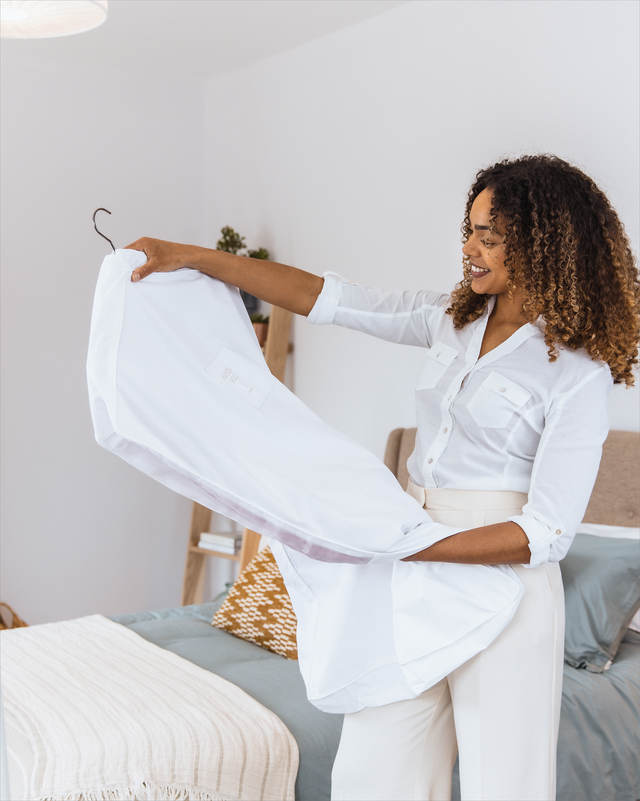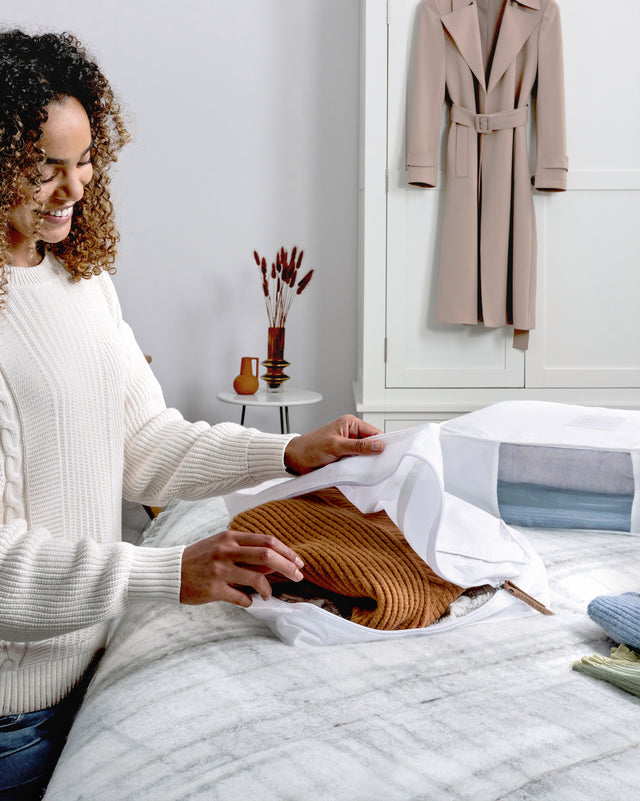Whether you prefer to DIY or enlist the help of professional cleaners, it is important to clean wool blankets correctly and you will continue to enjoy them for years to come. So read this article to find out how to wash a wool blanket.
In winter months, there is nothing more comforting and relaxing than curling up by the fireplace with a blanket.
In the middle of winter when there seems to be no end to the cold days and nights, you may find yourself using your wool blanket often.
And though wool is relatively durable and doesn’t stain easily, it still needs to be cleaned occasionally.
Learning how to care for your favourite wool blankets will help them last for years to come.
So let’s address some of the common questions about washing, drying, and storing wool blankets properly.
Can You Wash 100% Wool?
Yes, most of the time.
Be aware that if you want to wash a 100% wool blanket, whether it is worn vintage or a harder weave, you must be very gentle with it. Use only cold water and select a wool-friendly detergent.
The kind of wool used to make your blanket determines how it should be washed. There are several kinds of all-natural wool used to make blankets including:
- Alpaca: Alpaca wool is very versatile and is used in bedspreads, blankets, suits, and outerwear. Alpaca wool is popular for its durability and softness. Different Alpaca wools are used for different purposes. Huacaya fleece is often used to make blankets, whereas silkier Suri fleece is used in clothing.
- Angora: Not to be confused with mohair wool which is made from Angora goats, Angora wool is produced from Angora rabbits. It is fragile, yet fluffy and feather-light, and it has the best moisture-wicking of any wool or other natural fiber. Angora wool is often blended to make it stronger.
-
Camel: One of the more economic choices, camel wool became popular in the 1920s and continues to be used today in apparel, carpets, and upholstery. It is rare to find 100% camel wool blankets, but you may find blankets made with a camel blend.

- Cashmere: Luxurious cashmere comes from cashmere goats and is difficult to produce. Although not as durable as sheep’s wool, cashmere is lightweight and extremely soft.
- Lambswool: Also called virgin wool, lambswool is sheared from young sheep. It is smooth, soft, wrinkle-resistant, and hypoallergenic. Lambswool is a more expensive type of wool because a single sheep can only make lambswool once before maturing.
- Melton: Melton wool is one of the warmest, most durable types of wool. Melton wool is thick, water-wicking, and wind-resistant, making it perfect for heavy wool blankets and outerwear.
- Merino: Soft to the touch, Merino wool is a great balance of comfort, function, and cost. Therefore, it is a popular variety of wool that is often used to make winter blankets.
- Shetland: Shetland wool is cultivated from sheep native to the Shetland Islands of Scotland. Though this wool is used in knitting and is warm, lightweight, and versatile, it is rarely used to make blankets.
Can I Wash a Pendleton Wool Blanket?
Pendleton blankets are unique in that they are exclusively made by Pendleton Woolen Mills of Oregon, a privately held, sixth-generation family-owned business that has been making woollen products for more than 150 years.
There are several styles of Pendleton wool blankets on the market, but all of them are made with either Merino wool or 100% virgin wool. Read the care instructions on the blanket’s label to know whether or not to wash your Pendleton wool blanket. Some can be machine-washed or hand-washed, but others are dry clean only.
I Wash a Wool Blanket That Says Dry Clean Only?
Some wool blankets will have instructions on their labels that specify they are dry clean only. You may even routinely take some of your wool blankets to the dry cleaners out of fear the blankets would shrink or be ruined if you wash them yourself.
The truth about dry cleaning vs. home cleaning is complicated. Most wool blankets, even cashmere, do not require dry cleaning. But laundering them at home requires special care and attention.
Ultimately, if you are concerned that your blankets may be damaged, take the dry-clean-only items to the professional cleaners.
If you are willing to take a small risk, there is a way to properly clean any wool blanket yourself.
How to Clean and Care For a Wool Blanket
Washing wool blankets is not the only way to keep them clean and fresh. Wool blankets will stay clean for many years if you care for them correctly.
Here are some tips to consider:
- Air out your wool blankets. Ventilation is the best way to keep wool blankets fresh. Take your blankets outside and shake them out. Hang the blankets somewhere with air flow, as this will loosen dirt and dust from the threads of the blanket. You can shake the blanket again before bringing it back inside.
- Use a soft-bristle brush. Lay the wool blanket on the floor and brush in the direction of the grain. The wool fibres will lay in the same direction, enhancing the look of the blanket. Brushing the blanket can also help remove any stains or soil that were in the threading.
- Depilling. When the fibres of your wool blanket start coming loose, little balls or pills form. Pilling is the result of friction. In other words, the more you use your wool blanket, the more likely pills will form. You can get a special de-pilling comb to untangle the fibres, leaving a smooth, soft surface behind.
How to Spot Clean a Wool Blanket
Obviously, simply airing out and brushing wool will not always remove all stains. Wool is naturally water-repellent, but it is still susceptible to stains from things like coffee or juice. When you spill something on wool, spot clean the area as soon as possible.
Three items are needed to perform the spot cleaning: vinegar, a mild or pH-neutral laundry detergent, and a spray bottle. Then follow the steps below.
- Make the Cleaning Solution. In the spray bottle, mix together 1 part vinegar and 2 parts cold water. Do not use hot water, since that can shrink the fibres. As an added benefit, vinegar also helps remove any musty odours.
-
Treat the Stain. First, test the cleaning solution on a small part of the stain. Blot it gently with a clean cloth. If any of the dye comes off, stop cleaning and take the blanket to a professional dry cleaner.
Otherwise, spray the entire stained area and continue blotting.
If the vinegar and water solution is not effective, try mixing cold water with the pH-neutral detergent instead.
Repeat the same process of spraying and blotting dry. The stain should gradually disappear.
- Dry the Area. Once the stain is less noticeable, take a dry cloth and blot out any excess moisture from the wool. Then lay the blanket flat to air dry.
3 Ways To Wash a Wool Blanket
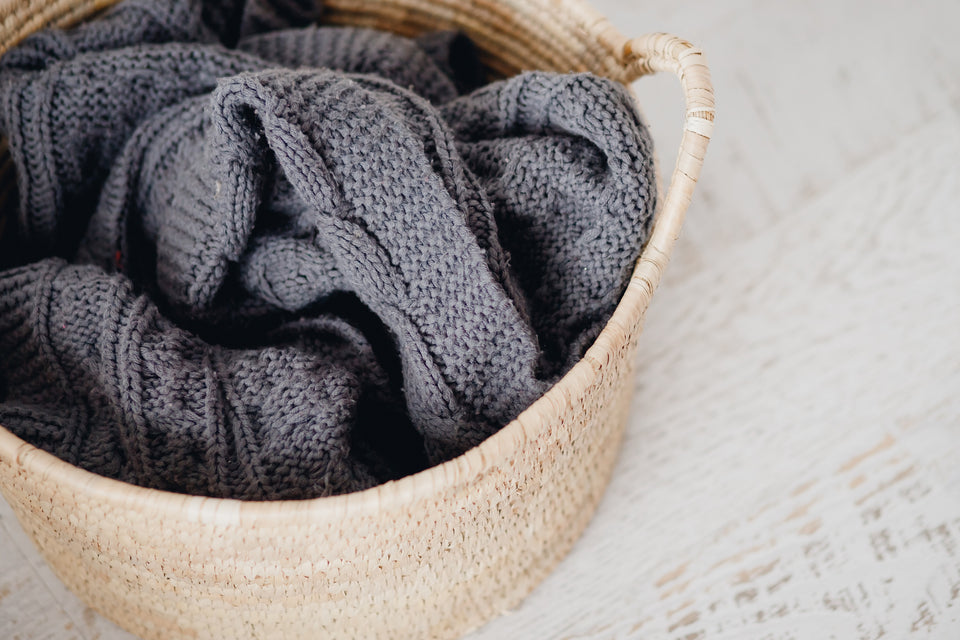
When spot cleaning just isn’t enough, there are safe methods for washing wool blankets. By nature, wool is durable, soft, and warm. Damaging a wool blanket takes a bit of effort, making them easier to care for than some other materials.
Plus, wool blankets do not require frequent washing. Most manufacturers recommend wool blankets only be washed every three months, and that is only for those items that are used often.
But when it is time to wash your wool blanket, there are three methods to choose from.
-
Hand-Washing Wool Blankets
This method is best for lambswool (virgin wool), as well as Merino wool and cashmere.
You will need a wool-friendly detergent (usually a detergent made for delicates) and fabric softener. Alternatively, you can use a gentle shampoo, since wool is technically hair.
Hand-washing wool is relatively straightforward. Begin by filling either a sink or a bathtub with lukewarm water (80ºF or less). Add a small amount of wool detergent or shampoo to the water. Mix the detergent in well before adding your wool blanket. Submerge the blanket in the soapy water and let it soak for 10-15 minutes.
After the time is up, gently swirl the wool blanket around in the water. Locate any especially dirty spots and rub them lightly with your hand. Never rub the fabric together as you would with cotton or other products, as that friction will damage the wool fibres, resulting in pilling and shrinking.
When you are finished washing the blanket, remove it from the dirty water. Rinse with clean water to remove any lingering soap and lay flat to dry.
-
Machine-Washing Wool Blankets
Look at your wool blanket’s care instructions to see if it allows for machine-washing. Sturdier wool fibres, like lambswool or a Pendleton blanket, will do fine in the washing machine.
Keep in mind that most wool cannot be washed with a machine because the heated water and spinning will result in loss of shape, shrinking, and pilling. Twill weave is less susceptible to damage. Never put softer wool, like cashmere, in the washing machine, even if your machine has a designated wool wash.
As with hand-washing, you will need a non-toxic detergent for delicates or a mild shampoo. Select the cycle that uses cold or lukewarm water (80ºF or less). If that is not available, use cold water and run on a gentle or delicate cycle. You want to avoid as much friction as possible during the spin cycle.
If your wool blanket has a stain, treat the stain with gentle soap and let it sit for about 10 minutes prior to putting the blanket into the washing machine.
And, if your washing machine has a hand wash cycle, it may be another option that is gentle enough for use on wool blankets.
-
Dry Cleaning Wool Blankets
The safest method for washing wool materials is dry cleaning. Hand-washing and machine-washing are other options that are available if you are comfortable taking the risk.
How to Keep Wool Blankets Soft
One of the best features of wool blankets is their softness, so maintaining that feel is important.
The detergent or shampoo you choose will determine whether your wool blankets retain their softness. Most wool-friendly cleaning products contain oils, such as orange oil or lanolin, that keep blankets soft to the touch. These products are usually cruelty-free and eco-friendly, so you can feel good about your purchase.
Drying Wool Blankets
After you hand-wash or machine-wash your wool blankets, it is time to dry them. Never put a wool blanket in a dryer. Wringing out the material and stretching it is also a bad idea. Instead, lay the blanket flat to dry and gently press out the water.
Another technique is to lay down dry towels and place the wool blanket on top. Then roll up the towels and blanket together like you would roll up a rug to squeeze out any remaining moisture. Roll it back out, reshape the blanket as needed, and lay it flat to air dry.
When letting the blanket air dry, your first instinct may be to hang it up to dry. But resist the impulse; hanging the blanket could cause parts of it to lose its shape and sag.
Also never place a wool blanket directly in the sun, as it could bleach the colours.
Storing Wool Blankets
Properly storing your wool blankets is just as important as washing and drying them correctly. Below are a couple of helpful tips we recommend to extend the life of your blankets.
- Choose the right storage container and location. The best way to store a wool blanket is to wait until it has dried completely and then fold it up. Place it inside a breathable storage container, such as a cotton bag, and put it somewhere cool and dark. Choosing a place that is out of direct sunlight prevents bleaching.
- Protect your blankets from pests. Always clean your wool blankets before storing them to prevent clothes moths. Once infested, clothes moths can be incredibly tricky to exterminate. That’s why it’s important to be proactive and take the necessary precautions to prevent moths. Use zippered storage bags that are made of breathable cotton. Cedar shavings also repel insects while adding a pleasant scent to any woollen clothing or bedding you have stored away.
Whether you prefer to DIY or enlist the help of professional cleaners, it is important to clean wool blankets correctly and you will continue to enjoy them for years to come.
